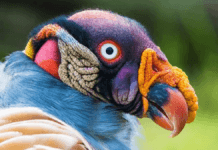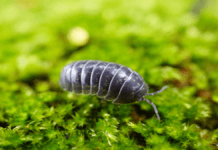Imagine a world where the forest ground teems with almost alien life. It’s known for its movement and diet, traits uncommon for what many mistake as a simple fungus. The bridge slime mold’s journey from a single spore to a fully grown colony is a marvelous narrative of survival and adaptation.

1. The Life Cycle of a Bridge Slime Mold
The existence cycle of the bridge slime mold is a fascinating story of transformation. This organism starts its ride as a spore, invisible to the bare eye. The spore springs to life when the prerequisites are simply right, with sufficient moisture and food. It grows into what is acknowledged as a plasmodium—a bright, blob-like shape that can move.
This plasmodium segment is remarkable. The bridge slime mold creeps alongside forest floors, ingesting microorganisms and tiny particles as food. It’s in the course of this segment that the slime mildew indicates its actual colors—literally. As it feeds and expands, it can take on many hues, growing a vivid spectacle.
After feasting and growing, the bridge slime mold is ready for the next phase. It forms a fruiting body. This is when it becomes most visible to us. The fruiting body is the reproductive structure. Its intricate details and striking color stand out against the forest backdrop.
From this fruiting body, new spores are released. They embark on their journey, repeating the cycle. The bridge slime mold, through these stages, plays a vital role in the ecosystem. It breaks down decay, recycles nutrients, and adds to the biodiversity of the forest floor.
1.1. The way of feeding on decaying organic matter
In the wild, the bridge slime mold has a critical role. It thrives by breaking down dead organic matter. This process is vital to the forest’s health. The slime mold’s diet includes dead leaves, wood, and other decaying matter. Consuming this recycles nutrients back into the soil.
The bridge slime mold does more than just eat. It also reproduces uniquely. When the time is right, it releases spores into the air. These spores spread far and wide, looking for a new growth place. When they land on a suitable spot, they start the life cycle anew.
This process of feeding and reproducing ensures that the bridge slime mold continues to be a part of the forest life cycle. It is a natural recycler and a vital player in the ecosystem.
1.2. Fascinating transformation of Bridge Slime Mold
As the bridge slime mold embarks on its transformative journey, it paints the forest floor with its life story. This tale begins with a tiny spore that blossoms into a living, breathing colony. The transformation is nothing short of magical. The mold starts as a mere speck, invisible to our eyes. It then erupts into a plasmodium, a living network of bright, vein-like structures that crawl stealthily across the forest bed.
The bridge slime mold transitions into a fruiting body, an elaborate structure that could be mistaken for a piece of intricate coral or a delicate sea fan. These fruiting bodies are the crown jewels of the forest floor, standing as miniature monuments to the cycle of life. They are where the bridge slime mold reaches the pinnacle of its existence, casting spores to the wind to continue its lineage. This life cycle, a beautiful display of nature’s artistry, showcases the bridge slime mold as a resilient and perpetual contributor to the forest’s vitality.
2. Slime Mold Intelligence: Beyond the Blob
A curious forest dweller, the bridge slime mold is not just another static organism. Recent studies have uncovered that these molds are capable of remarkable problem-solving behaviors that suggest a form of intelligence.
2.1. Research Reveals Slime Mold Smarts
Research has shown that the bridge slime mold can solve puzzles. It does so in a way that baffles humans. These organisms have been observed in lab settings, where they easily navigate through mazes. They decide which path to take, often choosing the most direct route to their goal, usually a food source. This display of spatial awareness challenges our understanding of intelligence in organisms without a brain.
2.2. Navigational Skills of the Bridge Slime Mold
The bridge slime mold’s ability to find the shortest path to food is not a simple feat. Slime molds have been known to form networks as efficient as human-engineered transportation systems in experiments. These molds spread out in search of food, retracting from dead ends and reinforcing the paths that lead to food sources. The result is a network of the most efficient routes, demonstrating sophisticated decision-making.
2.3. Scientific Examples of Slime Mold Problem-Solving
One of the most famous experiments illustrating the cognitive abilities of the bridge slime mold involved a map of Japan’s rail system. When oat flakes—representing cities—were placed on a map, the slime mold created a network similar to the rail system, optimizing paths between the flakes. Such experiments have led scientists to consider the bridge slime mold as a model for designing more efficient transport and network systems.
3. Slime Molds and the Ecosystem
Slime molds, along with the bridge slime mold, are unsung heroes of forest ecosystems. They play a silent but imperative function in breaking down leaf litter and different natural materials, turning them into vitamins that enrich the soil.
3.1. Decomposers of the Forest
The bridge slime mold flourishes on lifeless natural matter. As a decomposer, it breaks down complicated substances, releasing vitamins again into the soil. This procedure is quintessential for plant growth. Without slime molds, forests would begin to reclaim vitamins from fallen leaves and useless trees.
3.2. Supporting Forest Health
The fitness of a forest is intently tied to its smallest inhabitants, consisting of slime molds. Slime molds assist in preserving a balanced ecosystem by decomposing natural matter. They assist in increasing plant life and bushes that, in turn, grant habitat for countless species.
3.3. The Impact of Environmental Changes
However, the bridge slime mold faces habitat destruction and climate change threats. If we lose slime molds, we threaten to disrupt the refined stability of forest ecosystems. Soil first-rate may want to decline, affecting plants, trees, and the animals that rely on them. Recognizing the significance of slime molds is a step toward safeguarding our forests for the future.
4. The Future of Slime Molds: Beyond Decomposition
The bridge slime mold, a humble forest dweller, holds promise far beyond its role in decomposition. Scientists are exploring its potential in fields as diverse as medicine, engineering, and biomimicry.
4.1. Slime Molds in Science and Technology
Researchers are tapping into the bridge slime mold’s unique abilities for innovative applications. Its structure and growth patterns inspire engineers to design more efficient transport networks and city planning. The slime mold’s chemistry in medicine offers clues for new treatments and drugs.
4.2. Medical Marvels and Material Science
The biochemical pathways of the bridge slime mold are a goldmine for drug discovery. This organism has the potential to produce antibiotics that could combat resistant bacteria. Material scientists are intrigued by slime molds for creating self-healing structures, imitating their ability to repair and grow.
4.3. Harnessing Slime Mold Capabilities
Imagine a future where the bridge slime mold is not just a forest organism but a key player in sustainable technology and healthcare. Its intelligence could inform AI development, and its resilient nature might lead to breakthroughs in robust materials. The possibilities are as vast as they are thrilling.
Conclusion
The bridge slime mold, a tiny, however mighty, wooded area inhabitant, surprises nature. Its life cycle, from spore to fantastic fruiting body, is a marvel that encapsulates the splendor of biodiversity. This organism’s existence reminds us of the complex net of lifestyles that sustains our planet’s ecosystems.
As we shut this exploration, let us lift with us a feeling of awe for the herbal world. The bridge slime mildew is just one of the endless species contributing to our planet’s diversity. Protecting these species potentially safeguards the fitness of our surroundings and, ultimately, our well-being. The Bridge Slime Mold’s story is now not simply about a slimy substance transferring throughout the woodland floor. As we step into the future, our curiosity and reverence for nature might also inform us to keep the wondrous tapestry of lifestyles on Earth.













